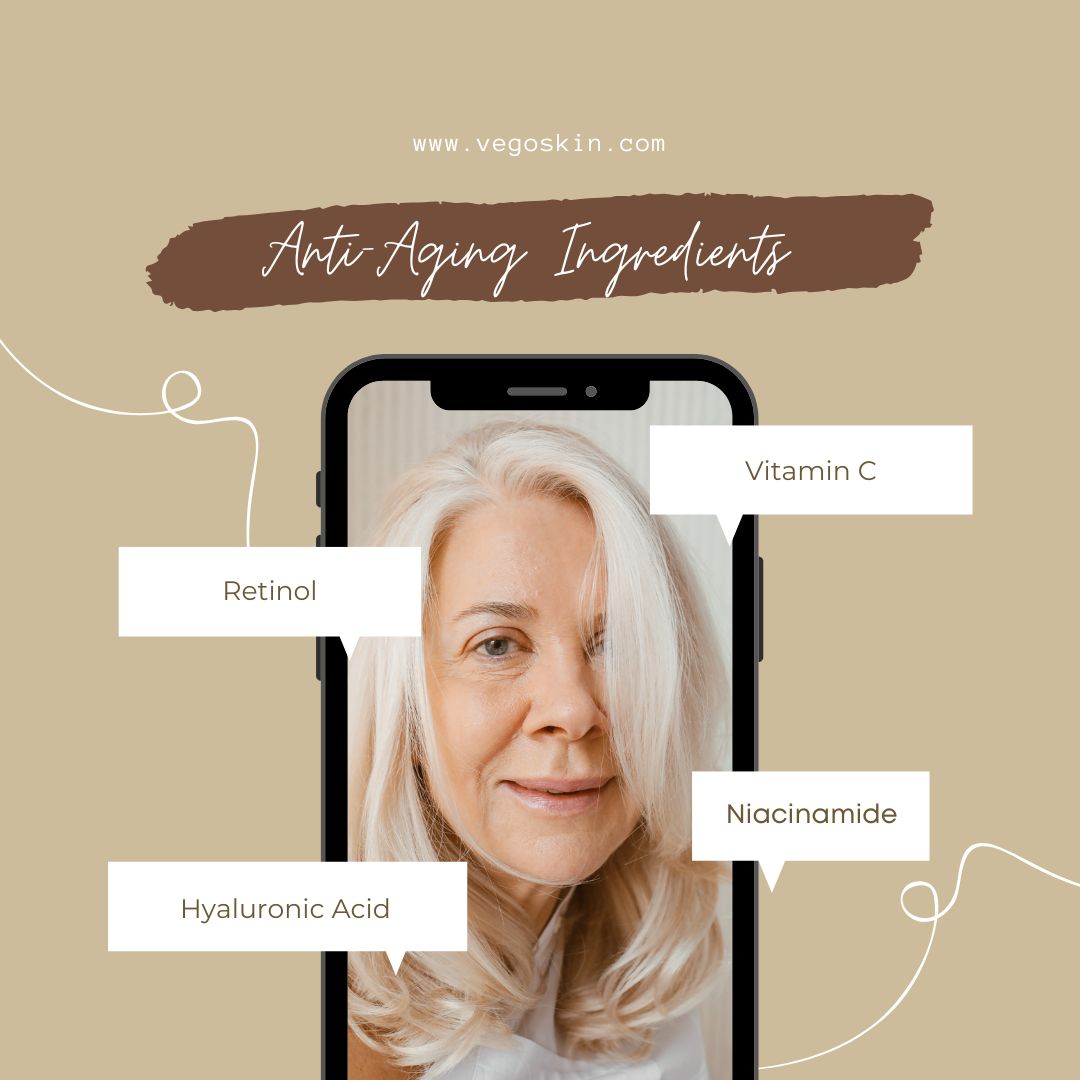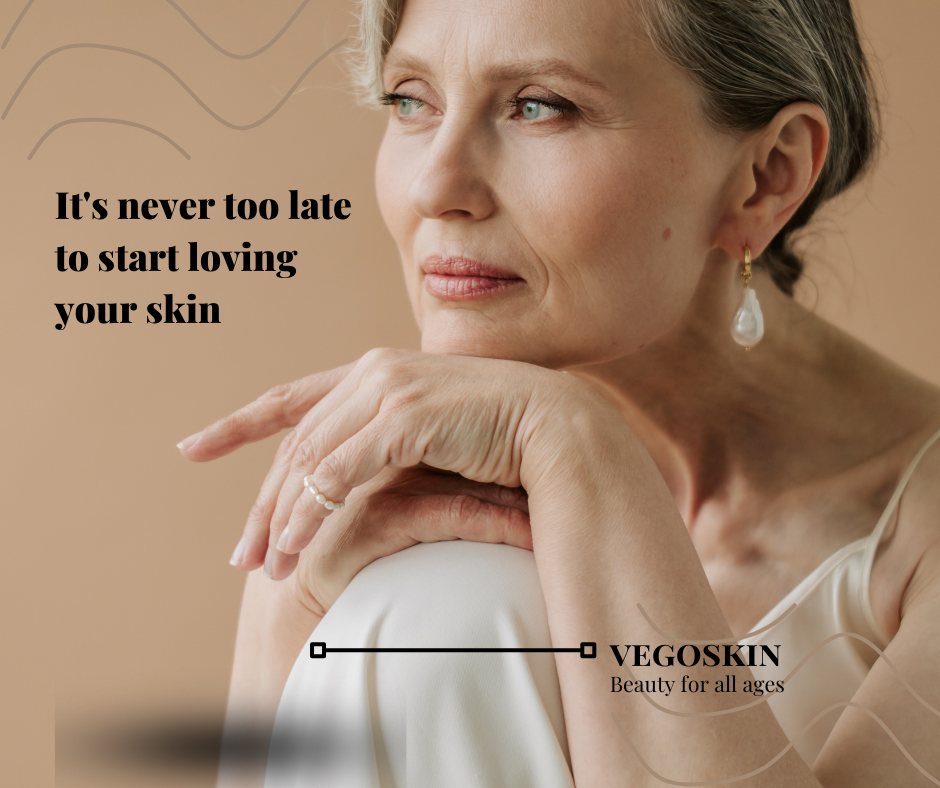Anti-Aging Ingredients You Should Be Using Right Now
Aging is a natural process, but who says we can’t age gracefully? With the right skincare ingredients, you can support your skin’s health, reduce visible signs of aging, and maintain a radiant complexion. The beauty industry is brimming with products, but not all ingredients are created equal. In this article, we’ll dive into the Anti-Aging Ingredients You Should Be Using Right Now to help you build a skincare routine that promotes youthful, glowing skin. From science-backed powerhouses to natural wonders, these ingredients are transforming the way we approach aging.
Whether you’re in your 20s looking to prevent early signs of aging or in your 50s aiming to restore elasticity, incorporating these ingredients into your routine can make a world of difference. Let’s explore the top anti-aging ingredients, how they work, and why they deserve a spot in your skincare arsenal.
Why Anti-Aging Ingredients Matter
Before we jump into the ingredients, let’s talk about why anti-aging skincare is so important. As we age, our skin undergoes changes—collagen production slows, elasticity decreases, and environmental factors like UV rays and pollution take a toll. Fine lines, wrinkles, dark spots, and dryness become more noticeable. The right ingredients can address these concerns by repairing damage, boosting cell turnover, and protecting against future harm.
Using Anti-Aging Ingredients You Should Be Using Right Now isn’t just about vanity; it’s about supporting your skin’s long-term health. Healthy skin acts as a barrier against external stressors, retains moisture, and reflects your overall well-being. By choosing ingredients backed by science, you’re investing in a routine that delivers results without empty promises.
1. Retinol: The Gold Standard for Anti-Aging
If there’s one ingredient that dermatologists universally praise, it’s retinol. A derivative of vitamin A, retinol is a powerhouse for reducing wrinkles, improving skin texture, and fading dark spots. It works by accelerating cell turnover, which helps shed dead skin cells and stimulate collagen production.
How to Use Retinol
Start with a low concentration (0.25% to 0.5%) to avoid irritation, especially if you’re new to retinol. Apply it at night, as it can make your skin sensitive to sunlight. Pair it with a broad-spectrum sunscreen during the day, like CeraVe AM Facial Moisturizing Lotion with SPF 30, to protect your skin.
Why It Works
Retinol penetrates deep into the skin, targeting fine lines and uneven tone. Studies, like those published in the Journal of Cosmetic Dermatology, show that consistent use over 12 weeks can significantly reduce signs of aging. If you’re serious about Anti-Aging Ingredients You Should Be Using Right Now, retinol is non-negotiable.
2. Vitamin C: The Brightening Antioxidant
Vitamin C is a must-have for anyone looking to brighten their complexion and fight free radical damage. This potent antioxidant neutralizes harmful molecules caused by UV rays and pollution, which can accelerate aging. It also boosts collagen synthesis and fades hyperpigmentation.
How to Use Vitamin C
Look for serums with 10-20% L-ascorbic acid, the most effective form of vitamin C. Apply it in the morning before sunscreen to maximize its protective benefits. A fan favorite is SkinCeuticals C E Ferulic, which combines vitamin C with ferulic acid for enhanced stability.
Why It Works
Vitamin C’s ability to brighten and even skin tone makes it a staple in anti-aging routines. According to a study in the Journal of Clinical and Aesthetic Dermatology, vitamin C can reduce pigmentation by up to 25% with regular use. It’s a key player among Anti-Aging Ingredients You Should Be Using Right Now.
3. Hyaluronic Acid: The Hydration Hero
Dry skin can exaggerate fine lines and make your complexion look dull. Enter hyaluronic acid, a humectant that draws moisture into the skin, keeping it plump and hydrated. It’s naturally found in our bodies but diminishes with age, making topical application essential.
How to Use Hyaluronic Acid
Apply a hyaluronic acid serum, like The Ordinary Hyaluronic Acid 2% + B5, on damp skin to lock in moisture. Follow with a moisturizer to seal it in. It’s gentle enough for all skin types and can be used morning and night.
Why It Works
Hyaluronic acid can hold up to 1,000 times its weight in water, making it a hydration superstar. Well-hydrated skin looks smoother and more youthful, which is why it’s one of the Anti-Aging Ingredients You Should Be Using Right Now.
4. Niacinamide: The Multitasking Marvel
Niacinamide, a form of vitamin B3, is a versatile ingredient that tackles multiple skin concerns. It strengthens the skin barrier, reduces redness, minimizes pores, and fades dark spots. It’s also great for regulating sebum production, making it ideal for oily skin types.
How to Use Niacinamide
Use a niacinamide serum with 5-10% concentration, such as Paula’s Choice 10% Niacinamide Booster. It plays well with other ingredients, so you can layer it with retinol or vitamin C (though some prefer to use them at different times to avoid irritation).
Why It Works
Niacinamide’s ability to improve skin barrier function and reduce inflammation makes it a standout. A 2016 study in the International Journal of Dermatology found that niacinamide significantly improved skin texture and tone after eight weeks. It’s a must in the lineup of Anti-Aging Ingredients You Should Be Using Right Now.
5. Peptides: The Collagen Boosters
Peptides are short chains of amino acids that signal your skin to produce more collagen and elastin, the proteins responsible for firmness and elasticity. They’re gentle yet effective, making them suitable for sensitive skin.
How to Use Peptides
Look for serums or creams with peptides like Matrixyl or Argireline. The Inkey List Peptide Moisturizer is a budget-friendly option. Use it after cleansing and before heavier creams.
Why It Works
Peptides support the skin’s structural integrity, reducing the appearance of wrinkles. Research from the Journal of Cosmetic Science shows that peptides can increase collagen production by up to 30% over four weeks. They’re a critical part of Anti-Aging Ingredients You Should Be Using Right Now.
6. Sunscreen: The Ultimate Anti-Aging Defense
No anti-aging routine is complete without sunscreen. UV rays are the leading cause of premature aging, breaking down collagen and causing wrinkles and dark spots. A broad-spectrum SPF 30 or higher is your best defense.
How to Use Sunscreen
Apply sunscreen as the last step in your morning routine. Reapply every two hours if you’re outdoors. Try La Roche-Posay Anthelios Melt-in Milk Sunscreen SPF 60 for lightweight protection.
Why It Works
The American Academy of Dermatology emphasizes that daily sunscreen use can prevent up to 80% of visible aging signs. It’s the cornerstone of Anti-Aging Ingredients You Should Be Using Right Now.
7. Bakuchiol: The Natural Retinol Alternative
For those with sensitive skin, bakuchiol is a plant-based alternative to retinol. Derived from the babchi plant, it offers similar benefits—smoother texture, reduced wrinkles—without the irritation.
How to Use Bakuchiol
Use a bakuchiol serum or cream, like Herbivore Bakuchiol Retinol Alternative Serum, at night. It’s gentle enough for daily use and pairs well with other ingredients.
Why It Works
A 2019 study in the British Journal of Dermatology found that bakuchiol is as effective as retinol in reducing fine lines and pigmentation after 12 weeks. It’s a rising star among Anti-Aging Ingredients You Should Be Using Right Now.
8. Alpha Hydroxy Acids (AHAs): The Exfoliation Experts
Alpha hydroxy acids (like glycolic and lactic acid) exfoliate dead skin cells, revealing smoother, brighter skin. They also stimulate collagen production and improve moisture retention.
How to Use AHAs
Start with a low concentration (5-10%) to avoid irritation. Use an AHA toner or serum, such as Pixi Glow Tonic, two to three times a week at night.
Why It Works
AHAs improve skin texture and reduce fine lines, as shown in a study from the Journal of the American Academy of Dermatology. They’re essential for anyone seeking Anti-Aging Ingredients You Should Be Using Right Now.
Building Your Anti-Aging Routine
Now that you know the top Anti-Aging Ingredients You Should Be Using Right Now, how do you incorporate them? Here’s a simple routine:
- Morning: Cleanse, apply vitamin C serum, follow with niacinamide, moisturize, and finish with sunscreen.
- Evening: Cleanse, use retinol or bakuchiol (alternate nights if using AHAs), apply hyaluronic acid, and seal with a peptide-rich moisturizer.
Start slowly, introducing one new ingredient at a time to monitor how your skin responds. Consistency is key—results take weeks, not days.
Lifestyle Tips to Complement Your Skincare
For optimal results, pair your skincare routine with a healthy lifestyle. Stay hydrated, consume a diet abundant in antioxidants (like berries, leafy greens, and nuts), and ensure you get 7-8 hours of sleep each night. Regular exercise boosts circulation, delivering much-needed oxygen and nutrients to your skin. For further insights into how lifestyle choices can impact skin health, we recommend checking out Healthline’s guide on anti-aging habits.
Common Mistakes to Avoid
- Overusing Actives: Too much retinol or AHAs can irritate your skin. Stick to recommended frequencies.
- Skipping Sunscreen: Without SPF, you’re undoing the benefits of other ingredients.
- Ignoring Your Skin Type: Oily skin may tolerate higher retinol concentrations, while dry skin needs more hydration.
The Future of Anti-Aging Ingredients
The beauty industry is always evolving, with new ingredients on the horizon. Stem cell extracts, growth factors, and microbiome-friendly formulations are gaining traction. Stay informed by following trusted sources like Byrdie or Allure.
Final Thoughts on Anti-Aging Ingredients You Should Be Using Right Now
Aging is inevitable, but with the right tools, you can keep your skin looking its best. By incorporating Anti-Aging Ingredients You Should Be Using Right Now—like retinol, vitamin C, hyaluronic acid, and sunscreen—you’re setting yourself up for a radiant, healthy complexion. Start small, be consistent, and pair your routine with a healthy lifestyle for the best results.
Your skin deserves the best, so why wait? Begin exploring these ingredients today and watch your complexion transform. For more skincare tips, visit Vogue’s beauty section or consult a dermatologist to personalize your routine.



